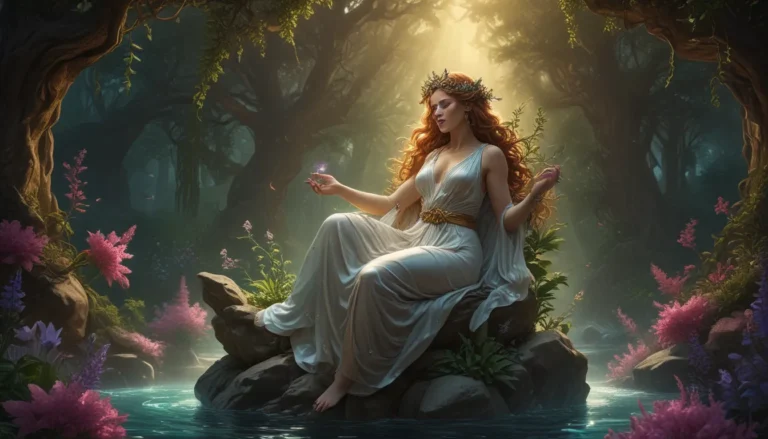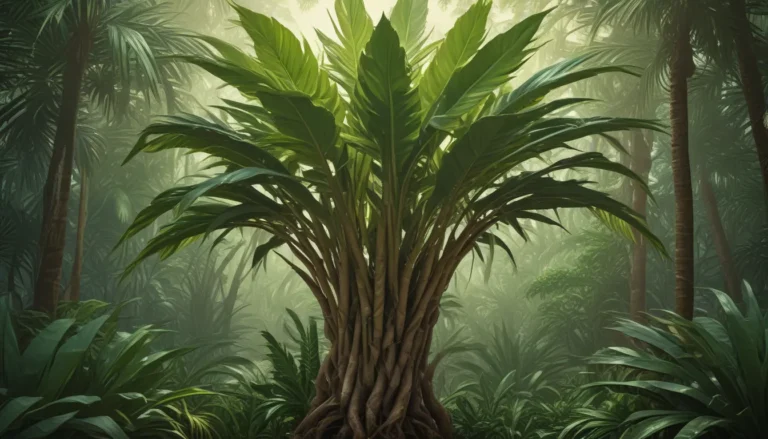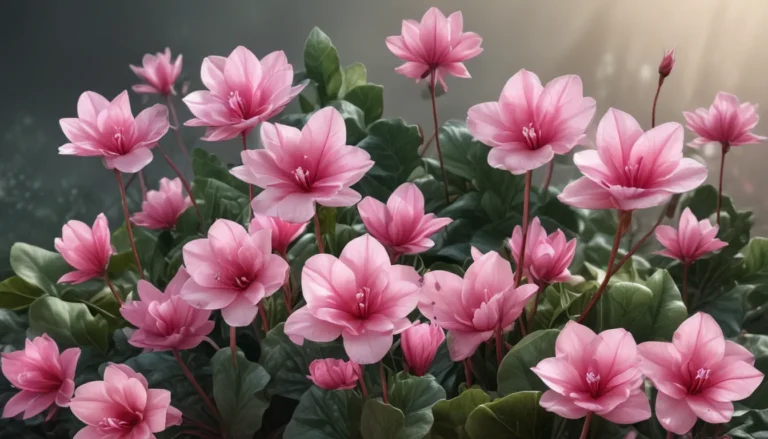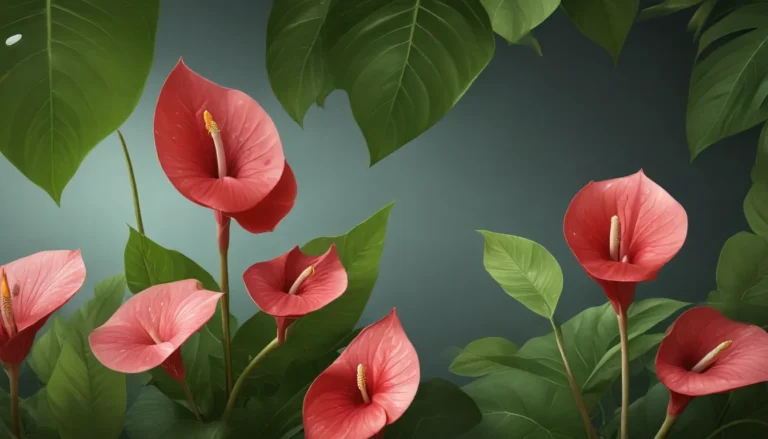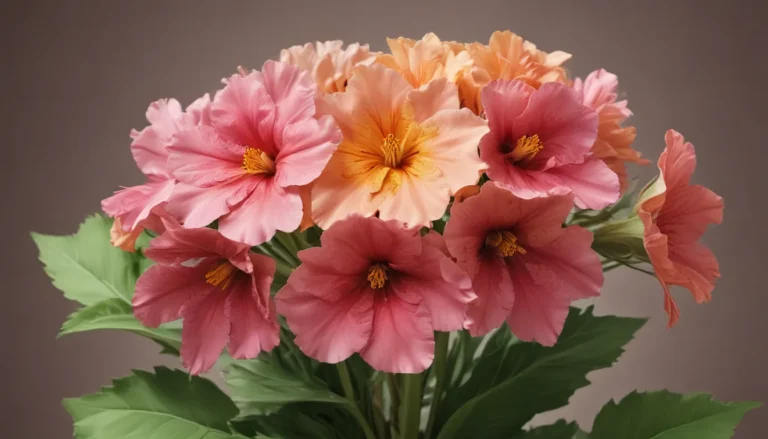The pictures we use in our articles might not show exactly what the words say. We choose these pictures to make you interested in reading more. The pictures work together with the words but don’t take their place. The words still tell you the important facts.
Are you looking to add a touch of tropical beauty to your indoor space? Look no further than the captivating Lipstick Plant, scientifically known as Aeschynanthus radicans. This enigmatic plant, with its vibrant red flowers reminiscent of a tube of lipstick, is sure to capture your heart and inspire your green thumb. Join us as we explore 15 intriguing facts about the Lipstick Plant, from its origins in the tropical rainforests to its symbolic significance and easy care requirements. Whether you're a seasoned plant enthusiast or a curious nature lover, get ready to dive into the fascinating world of Lipstick Plants.
Origins in the Tropical Paradise
The Lipstick Plant, with its scientific name Aeschynanthus radicans, originates from the lush tropical rainforests of Malaysia and Indonesia. Thriving in warm and humid climates, this plant brings a touch of the tropics to any indoor garden.
Blooming Beauty: The Vibrant Flowers
The main highlight of the Lipstick Plant is its stunning flowers. These tube-shaped blooms, ranging from bright red to vibrant orange, bear a striking resemblance to tubes of lipstick, hence the plant's unique name. Their vibrant colors are sure to add a pop of color to your space.
Epiphytic Elegance: Climbing with Grace
Lipstick Plants are epiphytic in nature, meaning they grow on other plants or objects for support. In their natural habitat, they can be seen gracefully climbing trees, using their aerial roots to anchor themselves securely.
Low Maintenance, High Appeal: The Charm of Lipstick Plants
If you're a busy plant parent, you'll be delighted to know that the Lipstick Plant is considered low maintenance. With moderate watering, bright indirect light, and well-draining soil, this plant thrives effortlessly, making it a perfect choice for both experienced and novice gardeners.
The Gesneriaceae Family Connection: A Hoya Relative
Belonging to the Gesneriaceae family, the Lipstick Plant shares its botanical lineage with popular plants like Hoya and African Violets. With fleshy leaves and unique flowering patterns, these plants exhibit a fascinating connection through their shared characteristics.
Hanging Basket Delight: Cascading Beauty
Due to its trailing nature, the Lipstick Plant is often showcased in hanging baskets. This presentation allows its vines to cascade gracefully, displaying its beautiful foliage and flowers from an aerial perspective, adding a touch of elegance to any space.
Symbol of Prosperity: Feng Shui and Lipstick Plants
In Feng Shui philosophy, the Lipstick Plant symbolizes good luck and abundance in the home. Its vibrant colors and growth patterns are associated with prosperity and wealth, making it a welcomed addition to any indoor space.
Purifying the Air: Natural Air Filtration
Beyond its visual appeal, the Lipstick Plant also acts as a natural air purifier, filtering out toxins and improving air quality in indoor environments. Its dual role as a decorative and functional plant makes it a valuable asset for health-conscious individuals.
Propagation Made Simple: Growing Your Lipstick Plant Family
Interested in expanding your Lipstick Plant collection? Fear not, as these plants are relatively easy to propagate. Whether through stem cuttings or layering the plant's aerial roots, you can enjoy the process of nurturing new growth in your plant family.
Hummingbird Haven: A Favorite Wildlife Attraction
The nectar-rich flowers of the Lipstick Plant make it a favorite hangout spot for hummingbirds. These tiny avian visitors are attracted to the plant's bright colors and sweet nectar, bringing an element of beauty and wildlife to your indoor garden.
Diverse Species, Unique Charm: Exploring Variation
While the Aeschynanthus radicans is the most commonly known Lipstick Plant, there are approximately 150 species within the Aeschynanthus genus. Each species offers unique characteristics, including varied flower colors and growth habits, providing plant enthusiasts with a diverse array of options.
Mythical Origins: A Tale of Beauty
Legend has it that the Lipstick Plant derived its name from an ancient mythical tale. According to the story, a goddess accidentally dropped her red lipstick into the rainforest, giving rise to the emergence of the Lipstick Plant from its ashes, a tale that adds a touch of enchantment to this captivating plant.
Medicinal Marvels: Traditional Uses
In traditional medicine, certain species of Lipstick Plants have been utilized to treat common ailments such as coughs, sore throats, and digestive issues. However, it is essential to consult a healthcare professional before using any plant for medicinal purposes to ensure safe and effective treatment.
Symbolic Significance: Expressions of Love and Passion
In some cultures, the Lipstick Plant is revered as a symbol of love, affection, and passion. It is often exchanged as a thoughtful gift to convey romantic feelings towards a loved one, adding a touch of sentiment to its already charming presence.
Enchanting Fragrance: A Sensory Delight
Beyond its visual allure, the Lipstick Plant emits a captivating fragrance that enhances its sensory appeal. The sweet and delicate scent of its flowers adds an extra dimension to its charm, creating a delightful experience for both the eyes and the nose.
The Lipstick Plant is a treasure trove of beauty and fascination, offering a blend of aesthetic appeal, symbolic significance, and easy care requirements. Whether you're looking to brighten up your indoor space, attract wildlife, or simply delve into the enchanting world of plants, the Lipstick Plant is sure to captivate your imagination and elevate your surroundings with its vibrant presence.
Embracing the Magic of Lipstick Plants
In conclusion, the Lipstick Plant stands as a testament to the wonders of nature, showcasing a unique blend of beauty and functionality in one captivating package. Its rich history, diverse benefits, and mesmerizing growth habits make it a must-have for any indoor garden enthusiast looking to add a touch of tropical charm to their space. With its effortless elegance and intriguing allure, the Lipstick Plant invites you to embrace the magic of nature and experience the joy of nurturing a living work of art in your home or workspace. So why wait? Let the enchanting beauty of Lipstick Plants brighten your days and fill your surroundings with the vibrant colors of tropical splendor.
FAQs: Answering Your Lipstick Plant Queries
- How often should I water my Lipstick Plant?
-
Keep the soil moist but not soggy, watering when the top inch feels dry to the touch.
-
Does the Lipstick Plant need a lot of sunlight?
-
The Lipstick Plant thrives in low to medium light conditions, preferring bright, indirect light near a window with filtered light.
-
How tall can a Lipstick Plant grow?
-
The Lipstick Plant can reach up to 3 feet in height under ideal conditions, although it is a slow grower that may take a few years to reach its full height.
-
Is the Lipstick Plant toxic to pets?
-
Yes, the Lipstick Plant is toxic to cats and dogs if ingested, so it's recommended to keep it out of reach or choose a pet-friendly alternative.
-
How do I make my Lipstick Plant bloom?
-
To encourage blooming, give the plant a period of darkness for a few weeks by reducing its light exposure during the fall.
-
Can I grow Lipstick Plants outdoors?
-
While commonly grown indoors, the Lipstick Plant can thrive outdoors in warm and humid climates, provided it has shade and protection from direct sunlight.
-
How do I propagate a Lipstick Plant?
-
You can propagate the Lipstick Plant through stem cuttings, placing a 4-6 inch cutting in well-draining soil and keeping it moist until roots develop.
-
How do I prune a Lipstick Plant?
-
Prune your Lipstick Plant in early spring before new growth begins to control its size and shape, encouraging bushier growth and a compact form.
-
How long do Lipstick Plant blooms last?
-
The blooms of the Lipstick Plant can last for several weeks, offering a prolonged display of vibrant flowers in your indoor garden.
-
Should I fertilize my Lipstick Plant?
- During the spring and summer months, fertilize your Lipstick Plant every two weeks with a balanced liquid fertilizer, reducing frequency to once a month in the fall and winter.
Embark on a Journey of Discovery with Lipstick Plants
Lipstick plants are just the beginning of a rich and rewarding journey into the world of indoor gardening. Explore the captivating realm of houseplants, uncovering a wealth of intriguing facts and insights along the way. Master the art of plant care to ensure your green friends thrive and flourish, with tools and tips to guide you on your horticultural adventure. Don't forget to revel in the beauty and allure of flowering plants, each offering a unique story waiting to be discovered in the comfort of your own home.
Did you find this information helpful?
Our commitment to delivering engaging and informative content is at the core of our mission. Every fact shared on our site is contributed by real users like you, bringing a diverse range of insights and knowledge to our platform. To uphold the highest standards of accuracy and authenticity, our dedicated editors meticulously review each submission, ensuring that the facts we present are not only fascinating but also trustworthy. Count on us to provide you with a reliable source of information as you explore, learn, and grow with us.

